PROTECT YOUR DNA WITH QUANTUM TECHNOLOGY
Orgo-Life the new way to the future Advertising by AdpathwayDiseases are a bit more difficult to manage than pests, partially because it’s hard to see them. They work on a microscopic level to infect leaves, roots, wood, and fruits. They’re particularly pesky at harvest time when the crops are at their ripest.
A little prevention goes a long way. Paying attention to the details, we’ll tidy up the garden and prevent diseases from overwintering. Diseases need three things to be present: an infectious disease, a host, and a conducive environment.
Remove one of these three things to remedy the disease. You can’t remove the fruit tree, so it’s best to change the environment or attack the disease. A combination of the two may be necessary for some extremely infectious fruit tree diseases.
What to Look For
So, where should you start inspecting? Look for anything out of the ordinary, such as off-color foliage, gnarly growth, or mushy harvests. Scrutinize your trees to see if something’s wrong with them. Some fruit tree diseases may hide on the undersides of leaves or underground in the roots.
Leaves
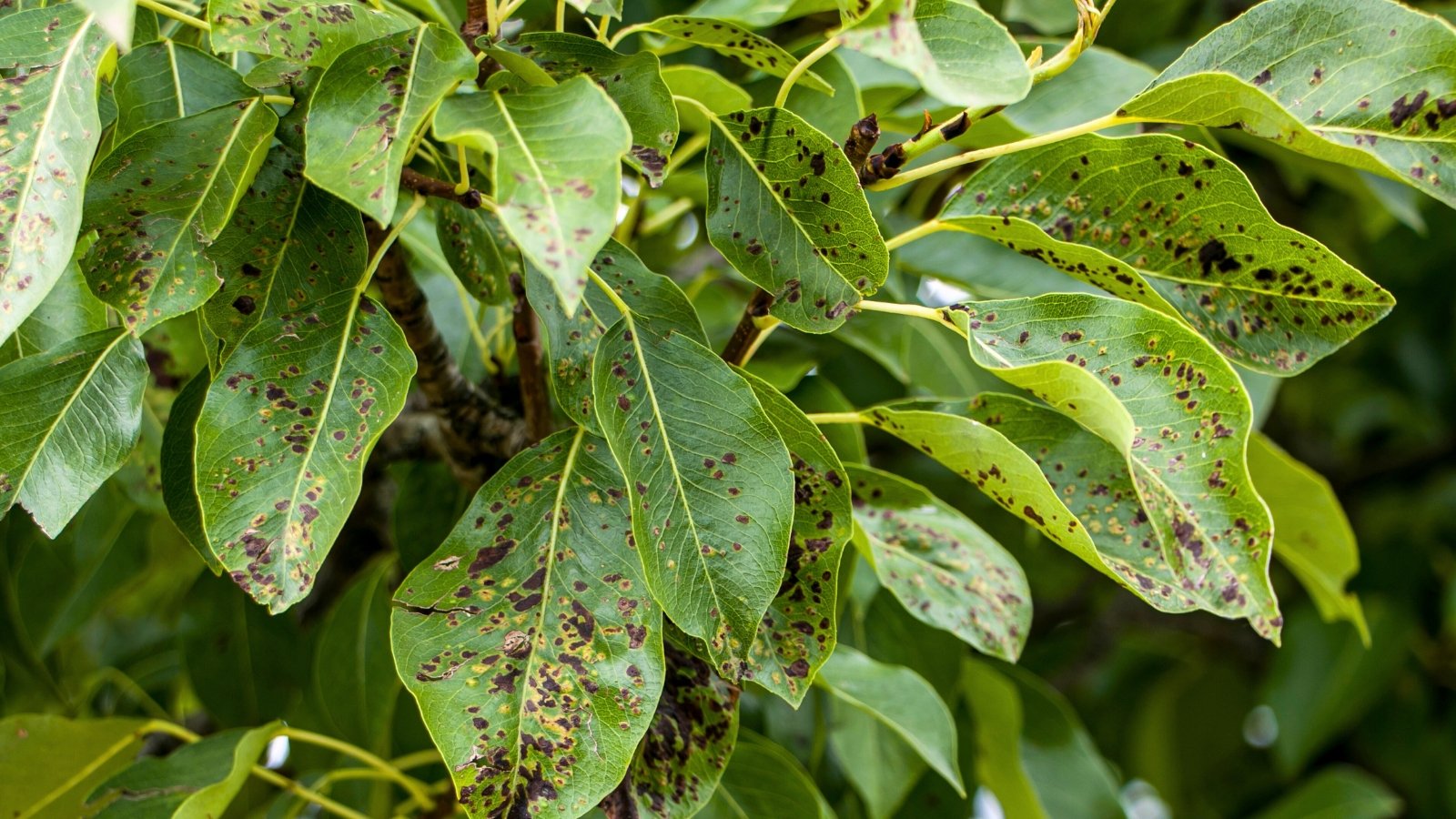 Leaves often reveal trouble before stems or buds.
Leaves often reveal trouble before stems or buds.Leaves are a good place to start looking. Watch for spots, fuzzy white growth, and abnormal growth. Peach leaf curl, for example, causes peach leaves to curl up into crunchy rolls.
Splashing the leaves with overhead sprinklers increases the spread of many fungal and bacterial fruit tree diseases. Watering extremes, like too much or not enough water, can also contribute to these conditions.
Wood
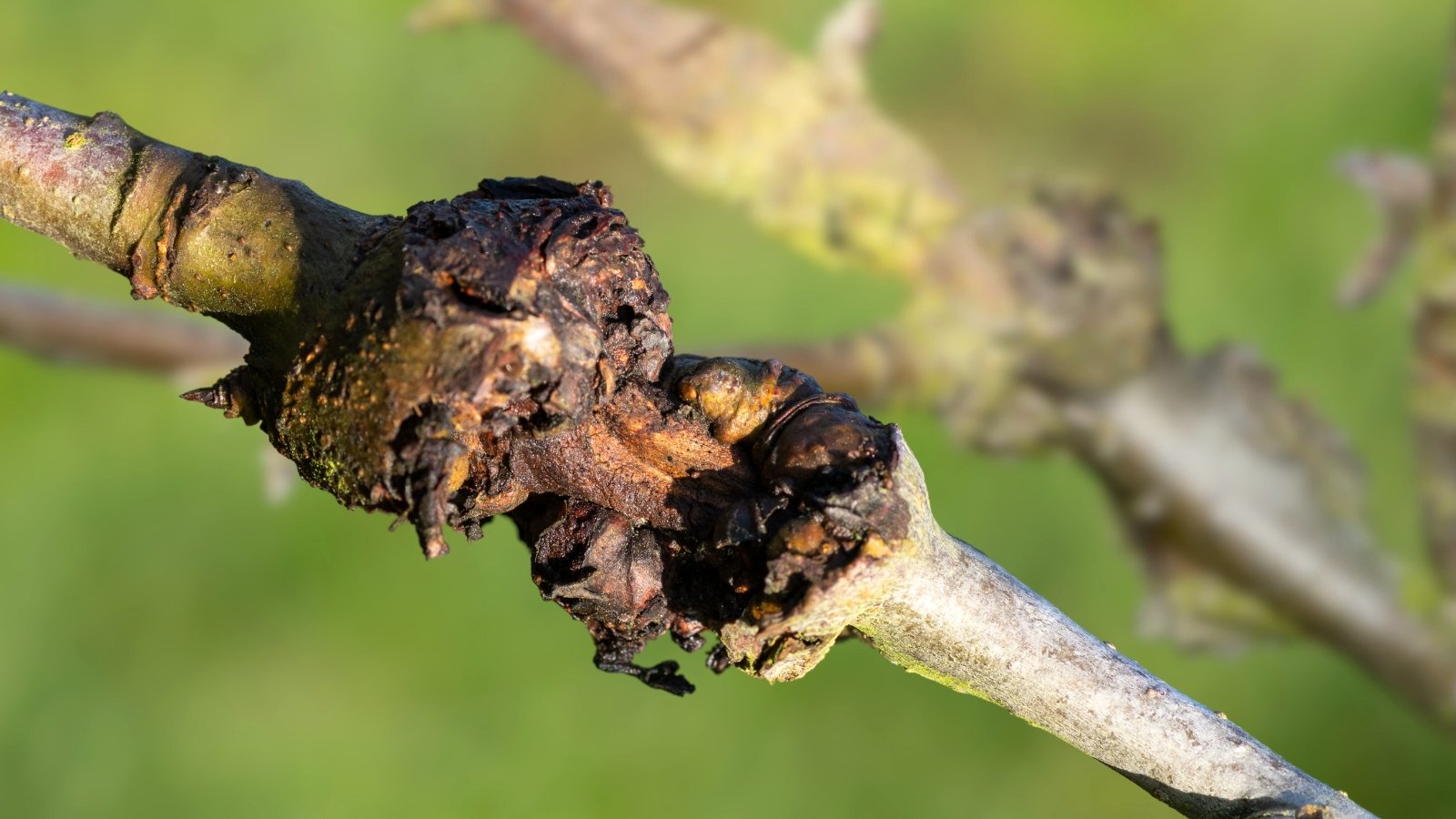 Cankers can quietly spread before signs become obvious.
Cankers can quietly spread before signs become obvious.Woody conditions are sometimes hidden, though they often have outward signs that clue you in to their presence. They cause symptoms in the tree, like cankers, rotting wood, and necrosis.
Pruning helps remove many conditions, like cankers, but it’s not a catch-all solution. It’s best to identify the fruit tree diseases at hand before finding a targeted solution that manages the specific fungus or bacterium.
Fruit
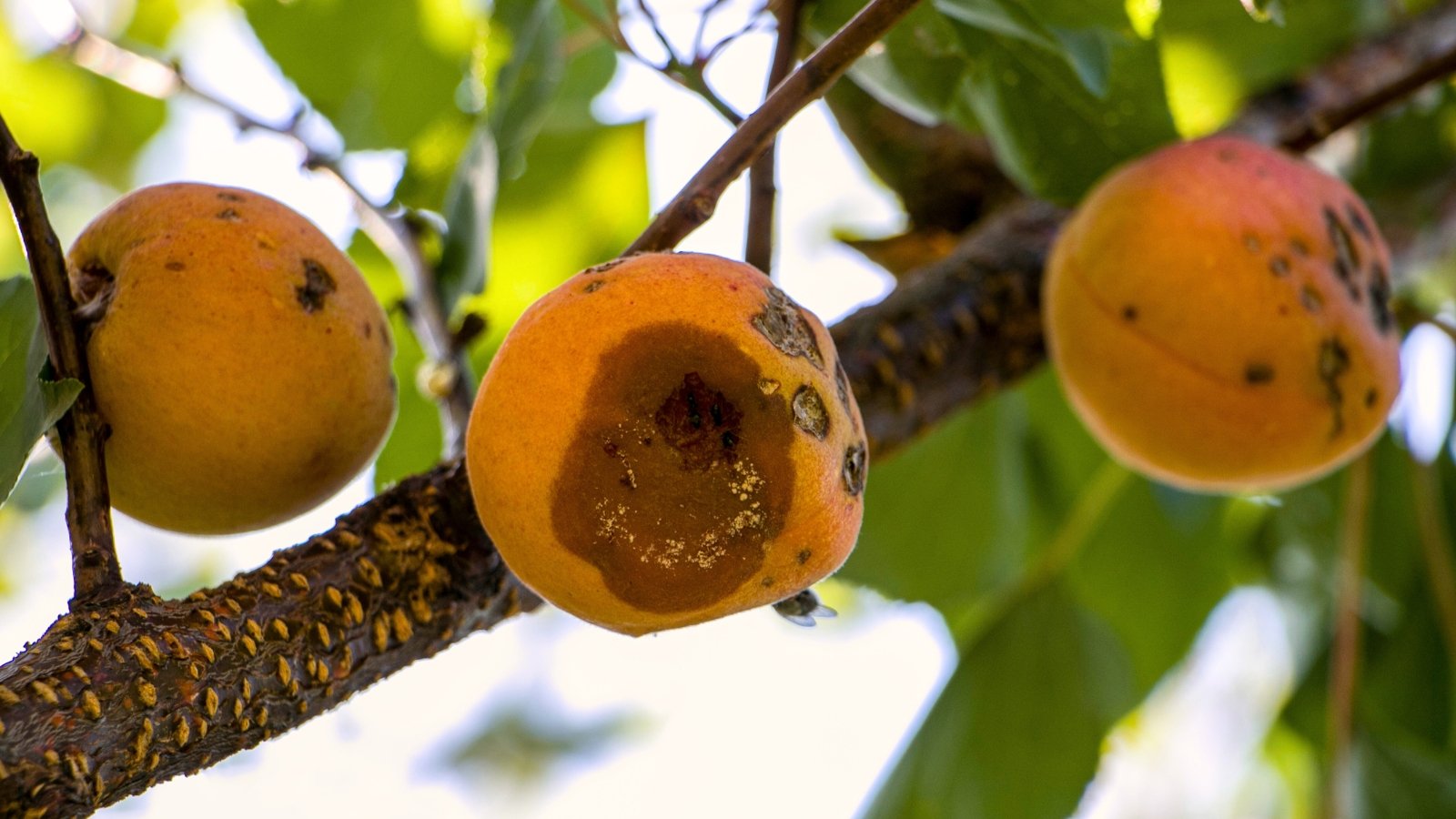 Some rots are harmless, others ruin the fruit.
Some rots are harmless, others ruin the fruit.The last place you want diseases to show up is on the fruit! Many ruin harvests, turning fresh apples and juicy pears into mushy messes.
Others arrive after pests make their way into the fruit. Rots, molds, and spots spread from open skins and make their way into the interiors.
While some fruit diseases turn your harvest inedible, others are easy to cut out or wash off. It all depends on the type of fruit and the disease that’s present.
Roots
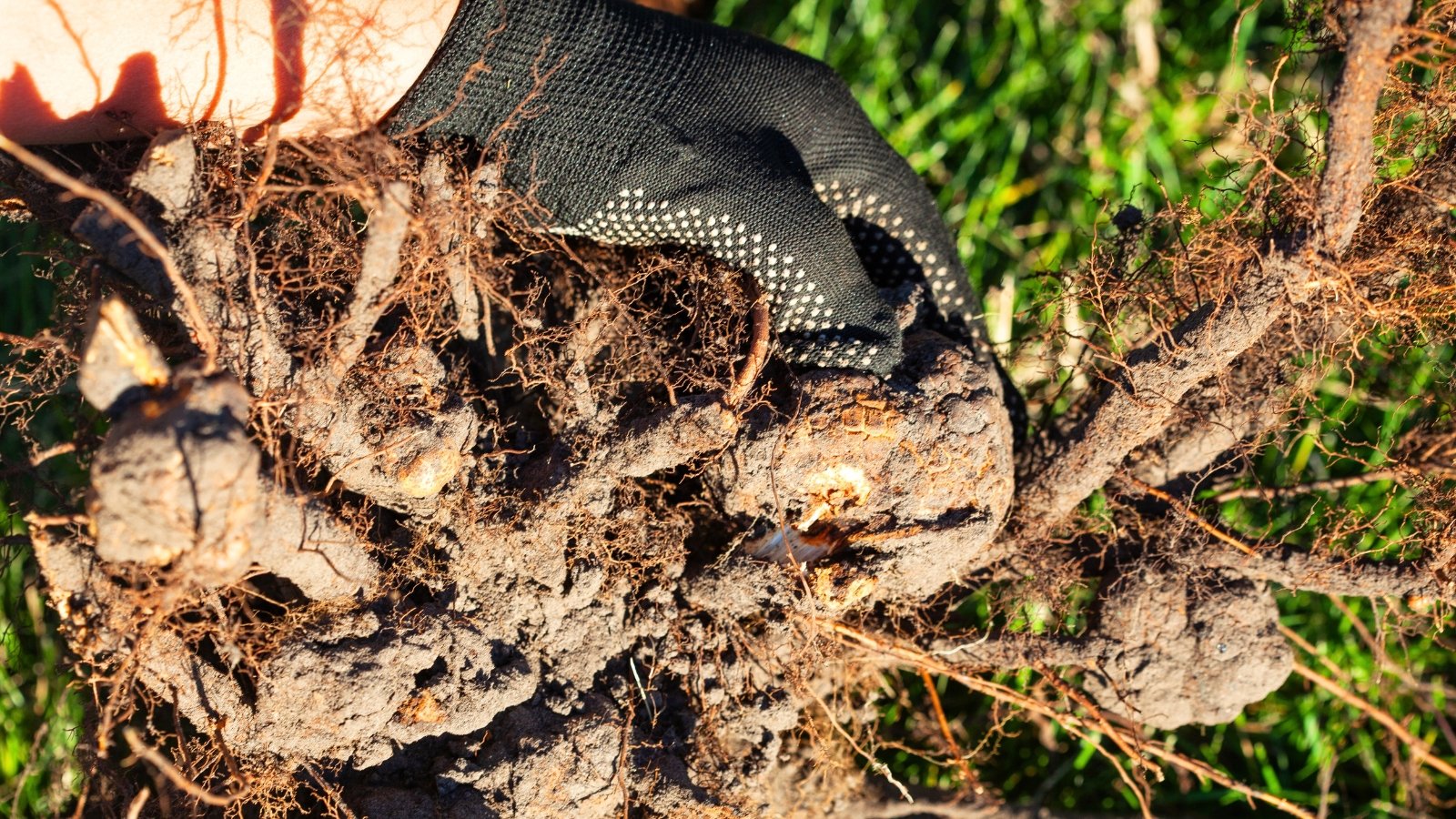 Poor drainage can invite silent trouble underground.
Poor drainage can invite silent trouble underground.Root diseases are secret killers. They infect the rootballs underground and cause them to wither away. It’ll be late in the infection once symptoms appear aboveground, like yellowing leaves or a lack of growth.
Many root diseases occur due to excess moisture. Fruit trees don’t like sitting in soggy soil, and they appreciate well-drained soil so they can perform their best.
Late Summer Fruit Tree Diseases
It’s not the end of the world if your fruit tree has a disease. There are ways to mitigate and prevent the pathogen so it doesn’t recur. The best way to know what’s going on is to check local resources, like those from local universities, to see which diseases are common in your region.
Some pathogens spread across the U.S. Watch for these common ones on your peach, pear, apple, plum, cherry, and tropical fruit trees.
Apple Scab
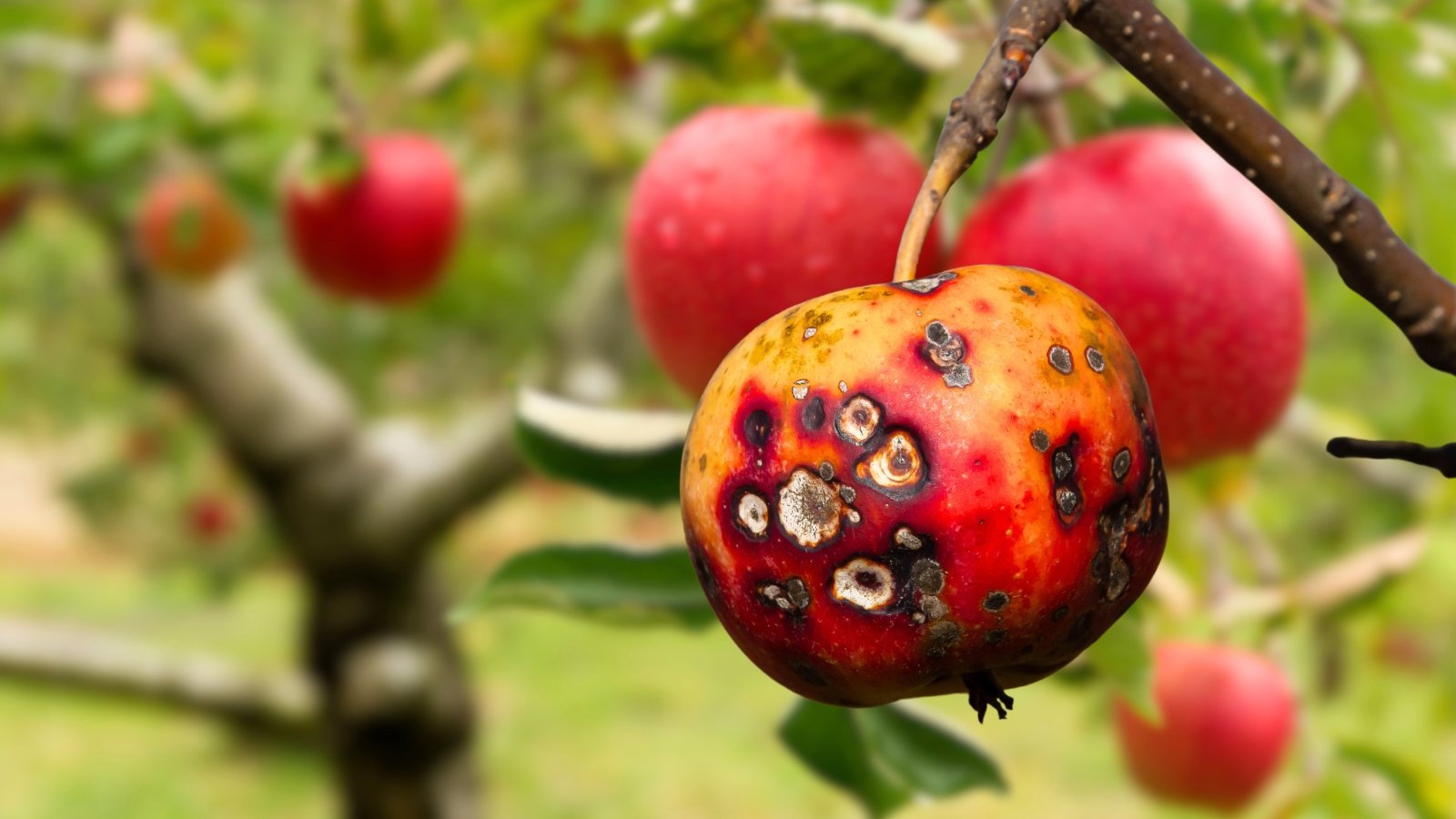 Warm breezes carry spores to tender new growth.
Warm breezes carry spores to tender new growth.Apple scab affects apples in regions where they’re a commercial crop. It causes black spots on the leaves first, then you’ll notice the spots spreading to the apples. The spots enlarge, crack, and some may open up to expose the flesh underneath the skin.
Apple scab spreads through leaves that were infected last year. They release spores when the weather warms, and they waft onto fresh spring foliage. The fruit tree disease worsens over time, and the symptoms are most noticeable in late summer and fall.
Brown Rot
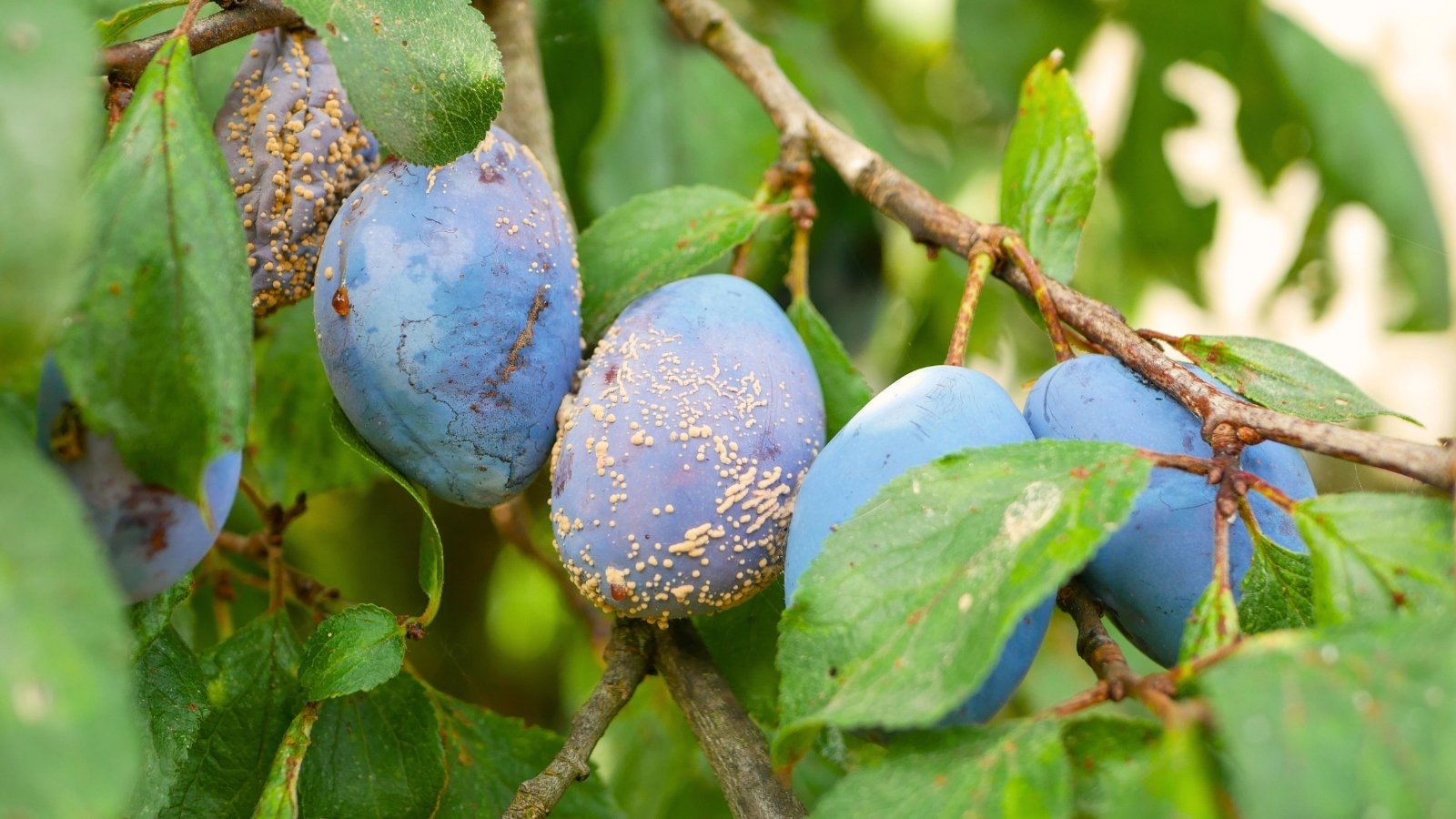 Rotten pieces left behind can fuel next year’s problems.
Rotten pieces left behind can fuel next year’s problems.Brown rot is a condition that stone fruits face. Cherries, plums, apricots, and peaches are all susceptible. It spreads slowly over the course of the growing season.
Brown rot starts when spores land on blossoms during rainy conditions. They grow and spread, causing shoots to die in the tree. The shoots remain and spread spores onto the fruit, which begin rotting and turning brown.
Removing the rotten fruit is the best way to prevent the disease from spreading. Don’t let it sit on the tree, or it’ll spread fungal spores the next year onto fresh blossoms and fruit.
Flyspeck
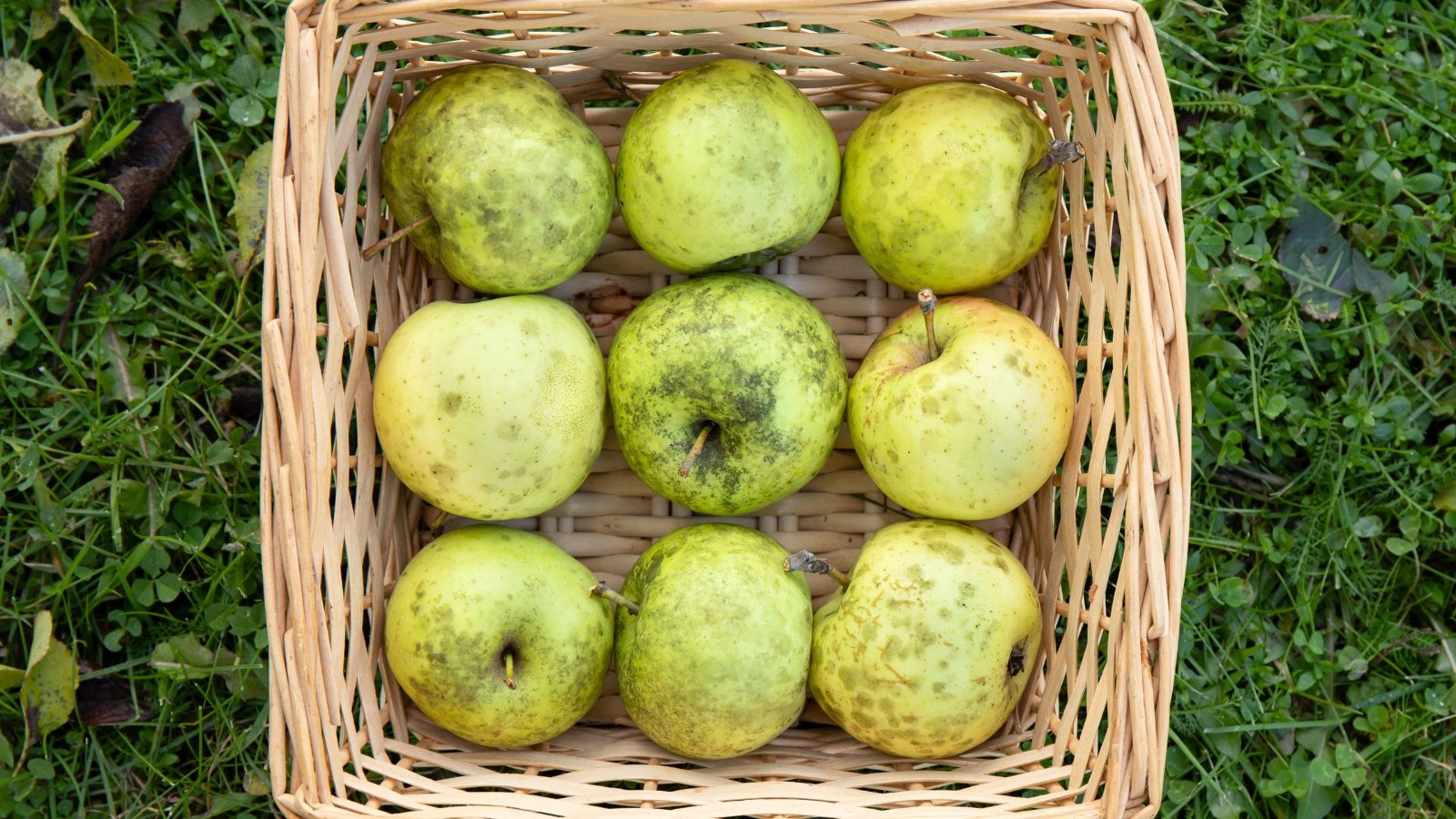 Speckles often appear after summer rains splash spores around.
Speckles often appear after summer rains splash spores around.Flyspeck is a fungal condition that’s not a huge problem. It’s ugly, sure, but it doesn’t affect the quality of the fruit. It’s a disease of apples, and it spreads when the weather is warm and humid.
Rainwater splashes the spores onto the skin of the apples. It spreads from infected bark, fruit, and leaves from the previous year. Regular garden cleanup and proper pruning can help mitigate the disease.
If flyspeck does occur, you may cut it out of the fruit or eat it. It’s not harmful, and it won’t rot the inside of your apples. It may also infect grapes and pears in areas where it’s common.
Leaf Spot
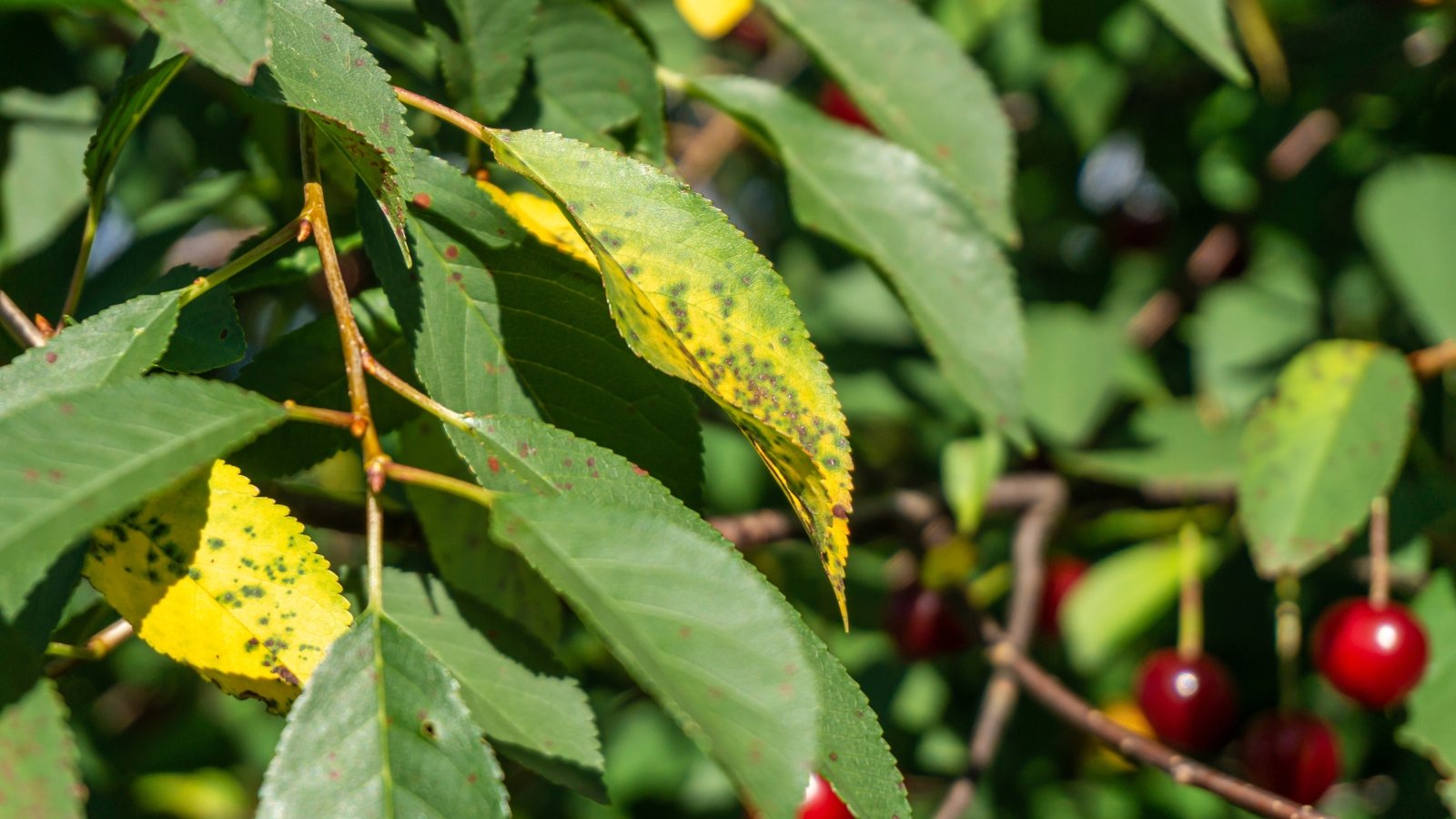 Even healthy trees can show occasional spotted leaves.
Even healthy trees can show occasional spotted leaves.Both bacteria and fungi cause leaf spot fruit tree diseases. They’re often harmless, though they can cause defoliation in extreme cases. Debris from the past year spreads the diseases onto the fruit trees when the weather warms.
Remove debris from your garden as it falls, and prune off infected leaves if the condition grows too severe. The fruit trees will tolerate bacterial leaf spot, though the fungal kind causes yellowing foliage and leaf drop as it spreads.
Peach Leaf Curl
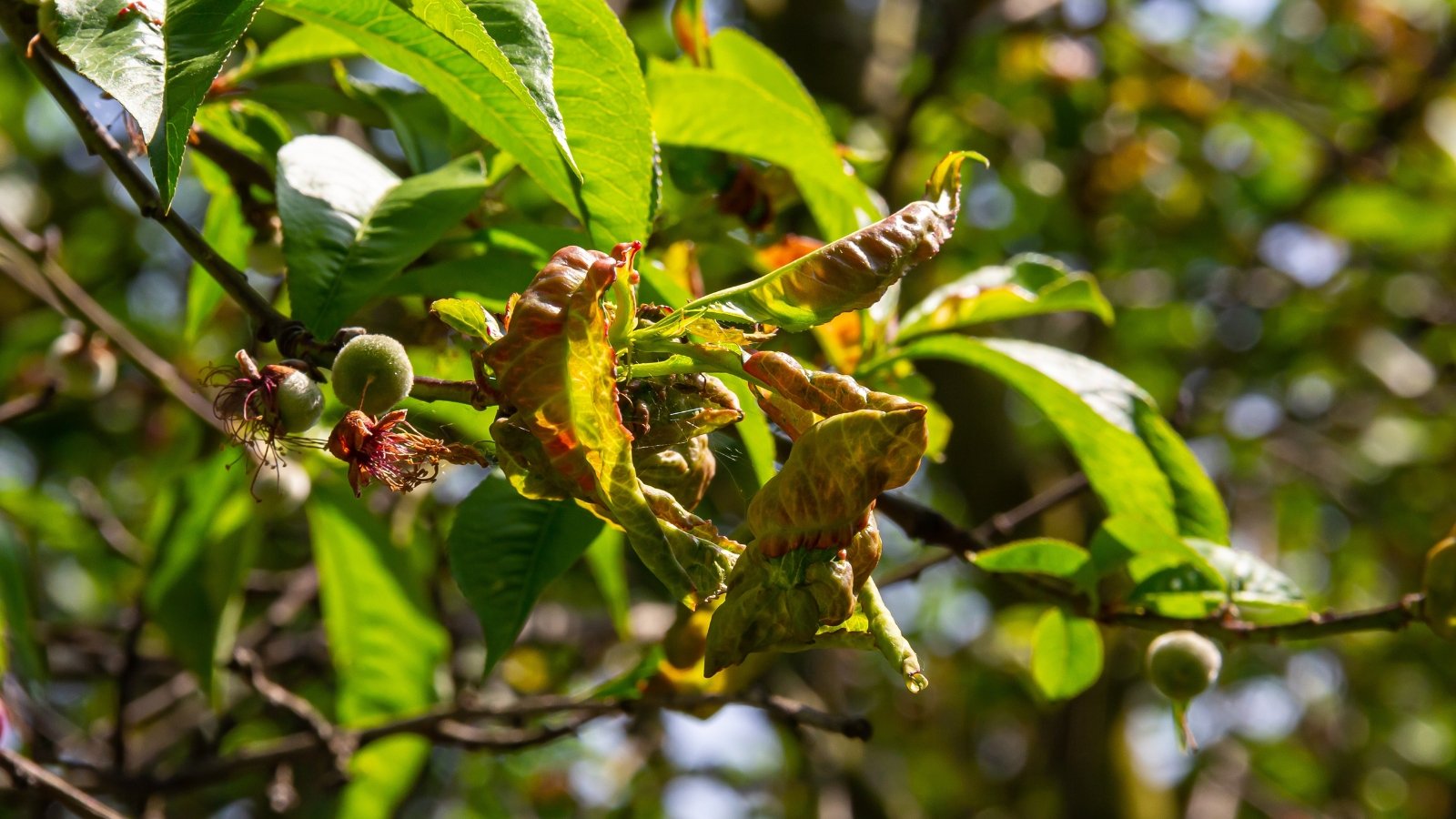 Orange and red hues appear far earlier than expected.
Orange and red hues appear far earlier than expected.Peach leaf curl is the bane of a peach grower’s existence! It’s common in wet regions around the East Coast and the Pacific Northwest. Open, healthy leaves will curl into tight rolls and turn crunchy. Some change from green to orange and red.
Try growing resistant varieties if peach leaf curl is common in your region. Plant cultivars like ‘Avalon Pride,’ ‘Betty Elberta,’ ‘Frost,’ and ‘Harken.’
Powdery Mildew
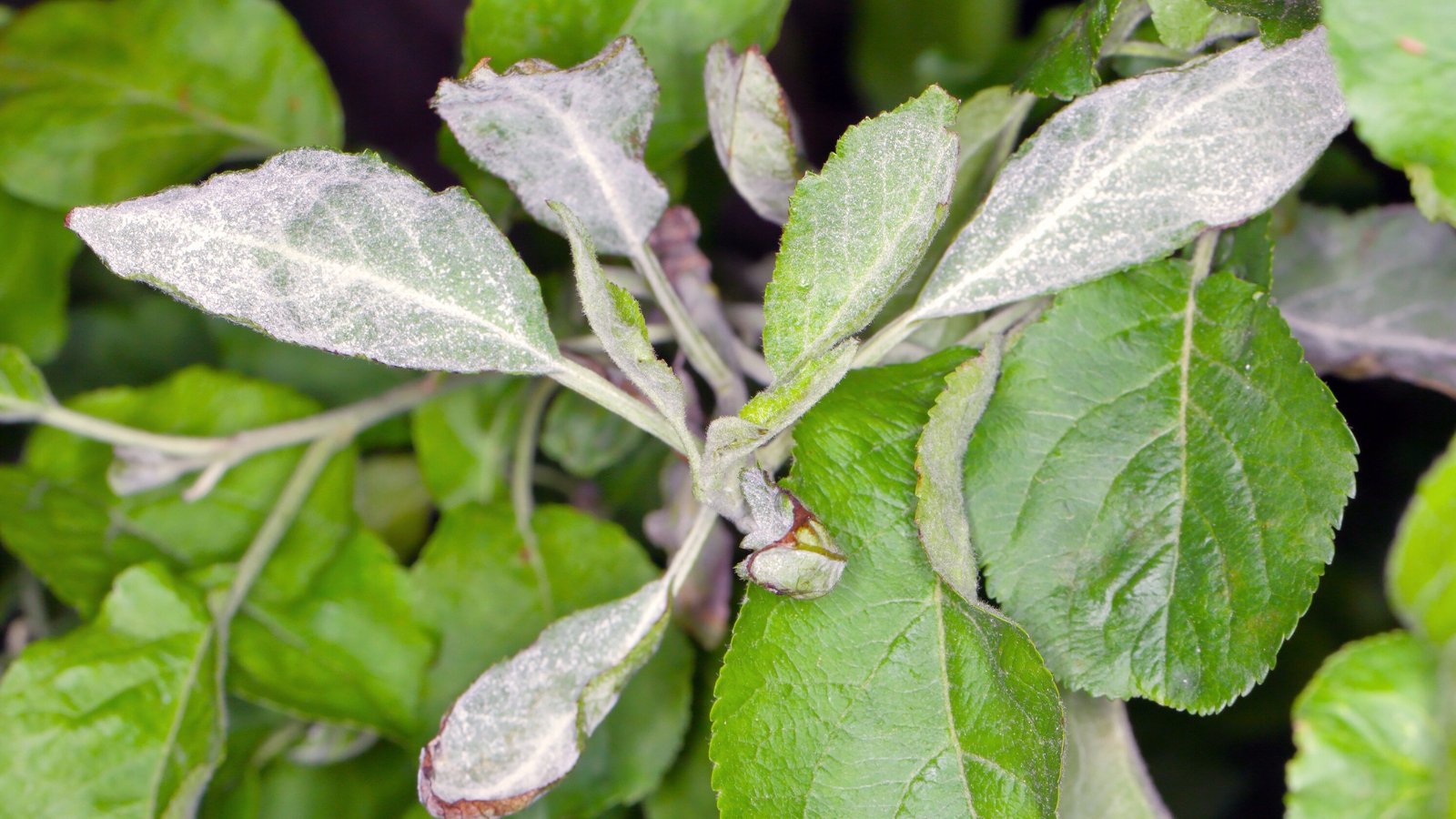 White fuzzy patches sneak onto leaves after rain.
White fuzzy patches sneak onto leaves after rain.Powdery mildew is incredibly common! It’s not only a plague of fruit trees; it infects lilacs, squashes, and a wide array of other crops and ornamental plants.
This disease is a fungal type that causes white, fuzzy growth on leaves and fruit. It spreads in warm, humid weather from infected leaves and stems from the previous growing season. Stop it from spreading by keeping the garden tidy each autumn and spring.
Root Rot
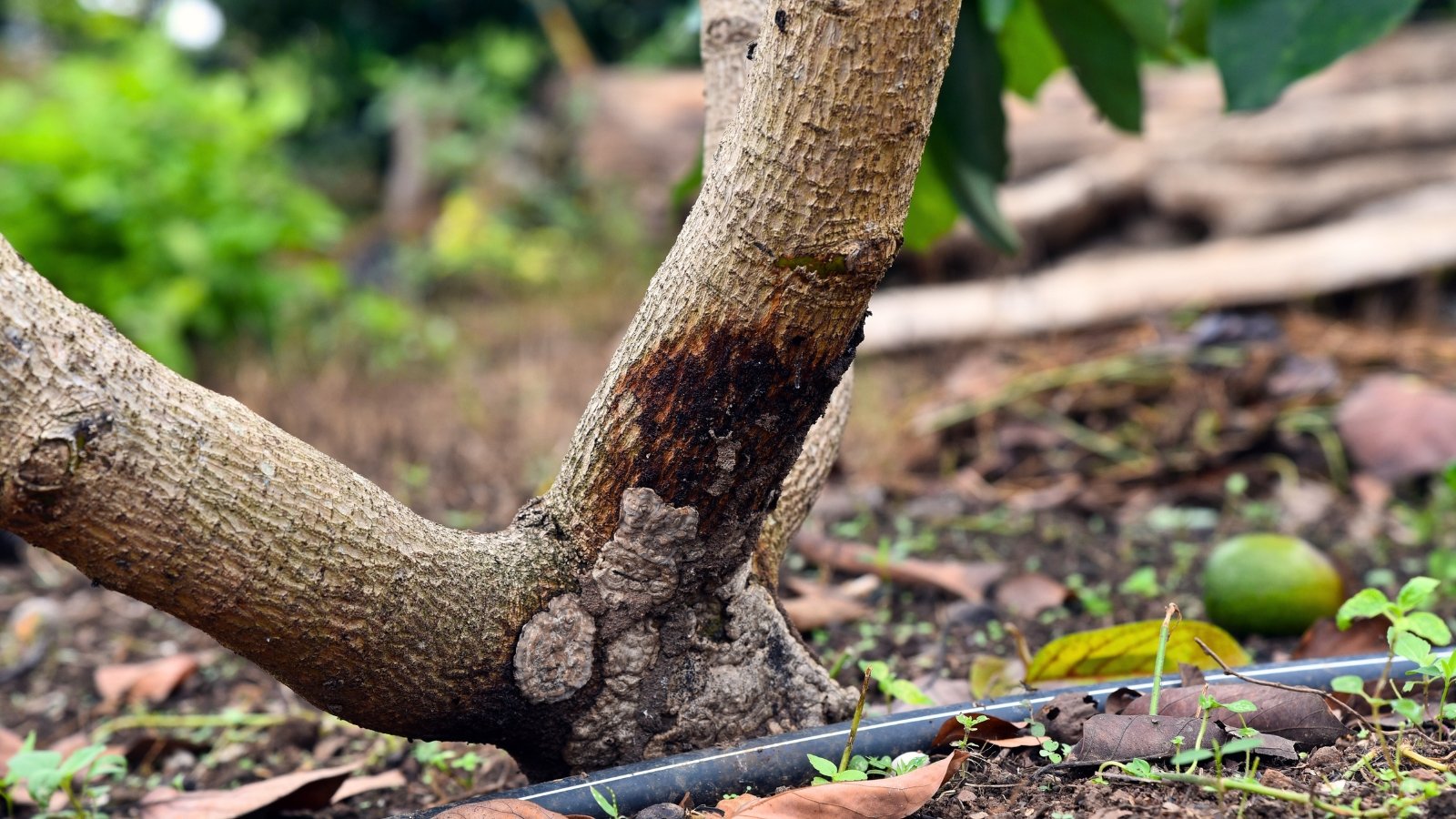 Soggy soil invites trouble for tired tree roots.
Soggy soil invites trouble for tired tree roots.Phytophthora root rot and crown rot are the two common types of root rot, though there are many others that affect fruit trees and other crops. They spread when the soil grows soggy and when it has poor drainage.
The infection spreads when the soil is wet, but its symptoms grow evident when the weather warms in late summer. Yellow leaves, dying shoots, and mushy roots become more common as the condition worsens.
Sooty Blotch
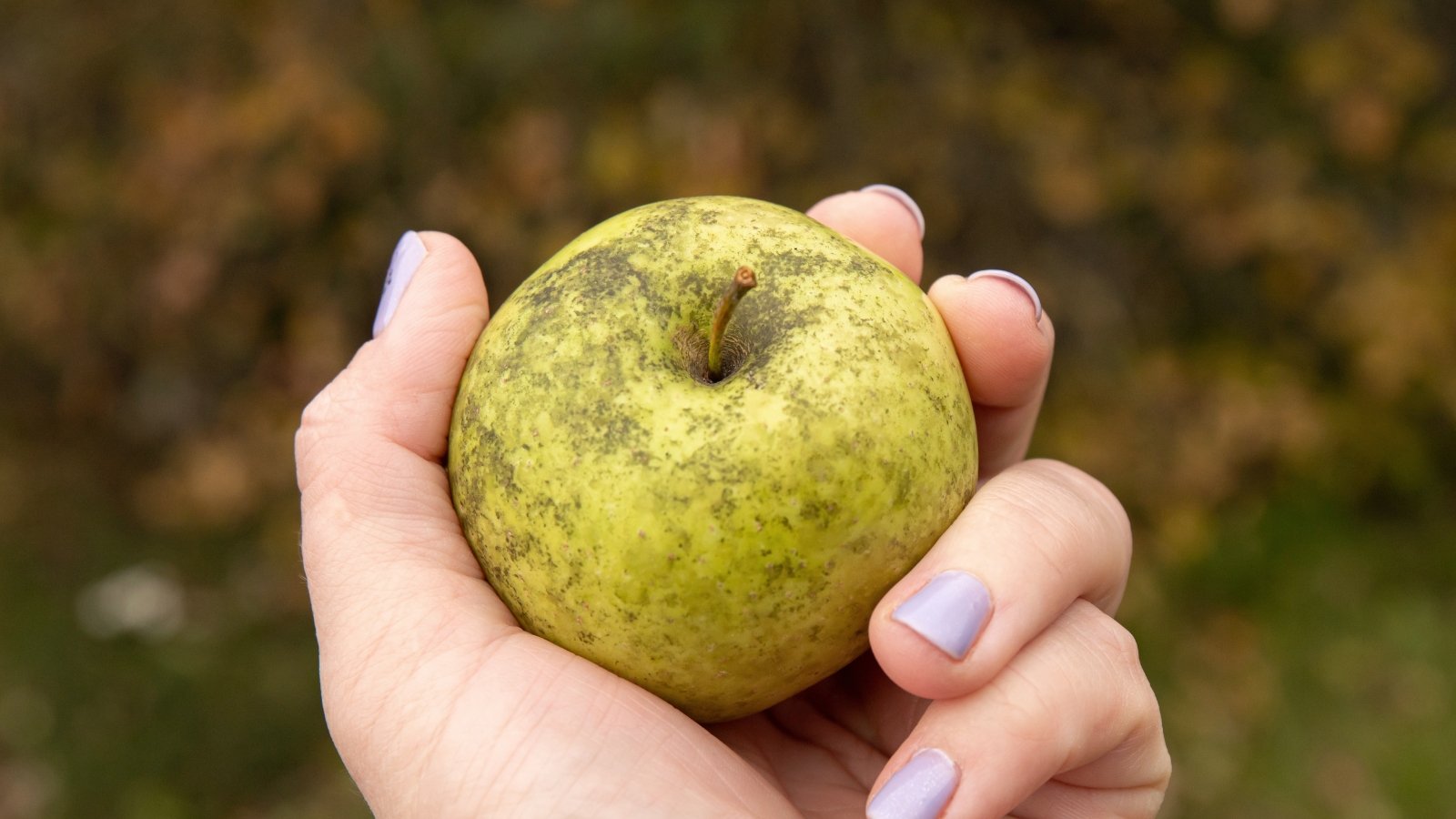 Dusty blotches show up when trees get too humid.
Dusty blotches show up when trees get too humid.Sooty blotch, like flyspeck, is a surface condition that affects the skin of apples in late summer. It also harms pears and crabapples in some cases. You’ll notice a dusty film that forms on the skin of the fruit.
Unlike flyspeck, sooty blotch is easy to remove. Rub it off with a cloth or paper towel to get rid of it. To prevent it, decrease the humidity in the tree’s canopy with annual pruning.
Prevention and Management
With healthy, regular gardening habits, it’s easy to reduce the prevalence of diseases in your orchard. Cleaning the garden isn’t like cleaning indoors! It’s a bit different.
Clean Debris
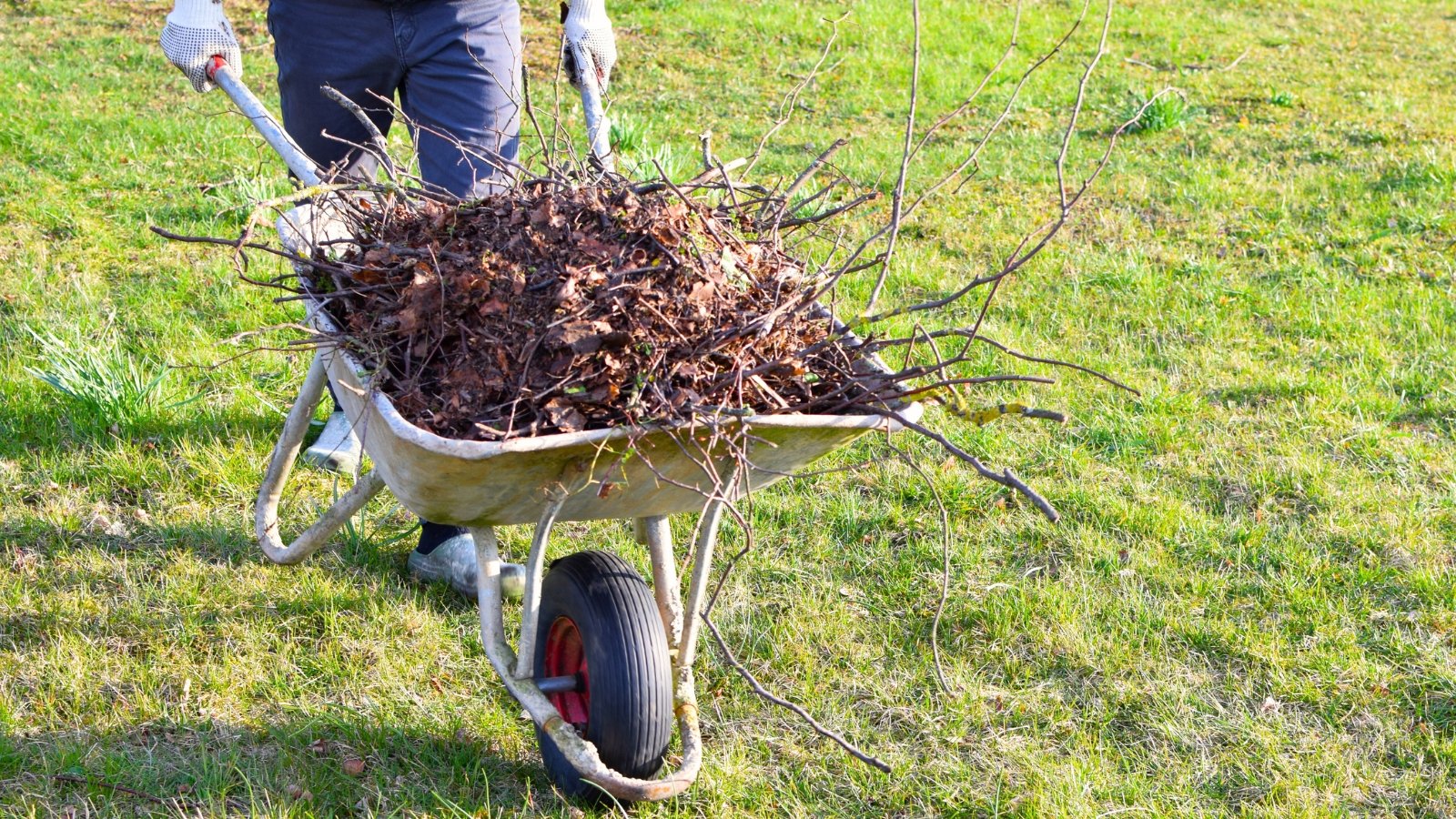 Clearing dead leaves stops spores from spreading fast.
Clearing dead leaves stops spores from spreading fast.Garden debris, like leaves, dead stems, and fallen fruit, builds up as it falls. It persists on the soil and fosters spores and bacteria. Cleaning the debris is helpful in preventing fruit tree diseases from building up in the orchard.
Put the debris in a hot compost pile to break down any possible pathogens, or bury it deep underneath a foot of soil away from the trees. If you lack space in your yard, dispose of the organic matter in a green waste bin or composting bin for city collection.
Prune the 3 D’s
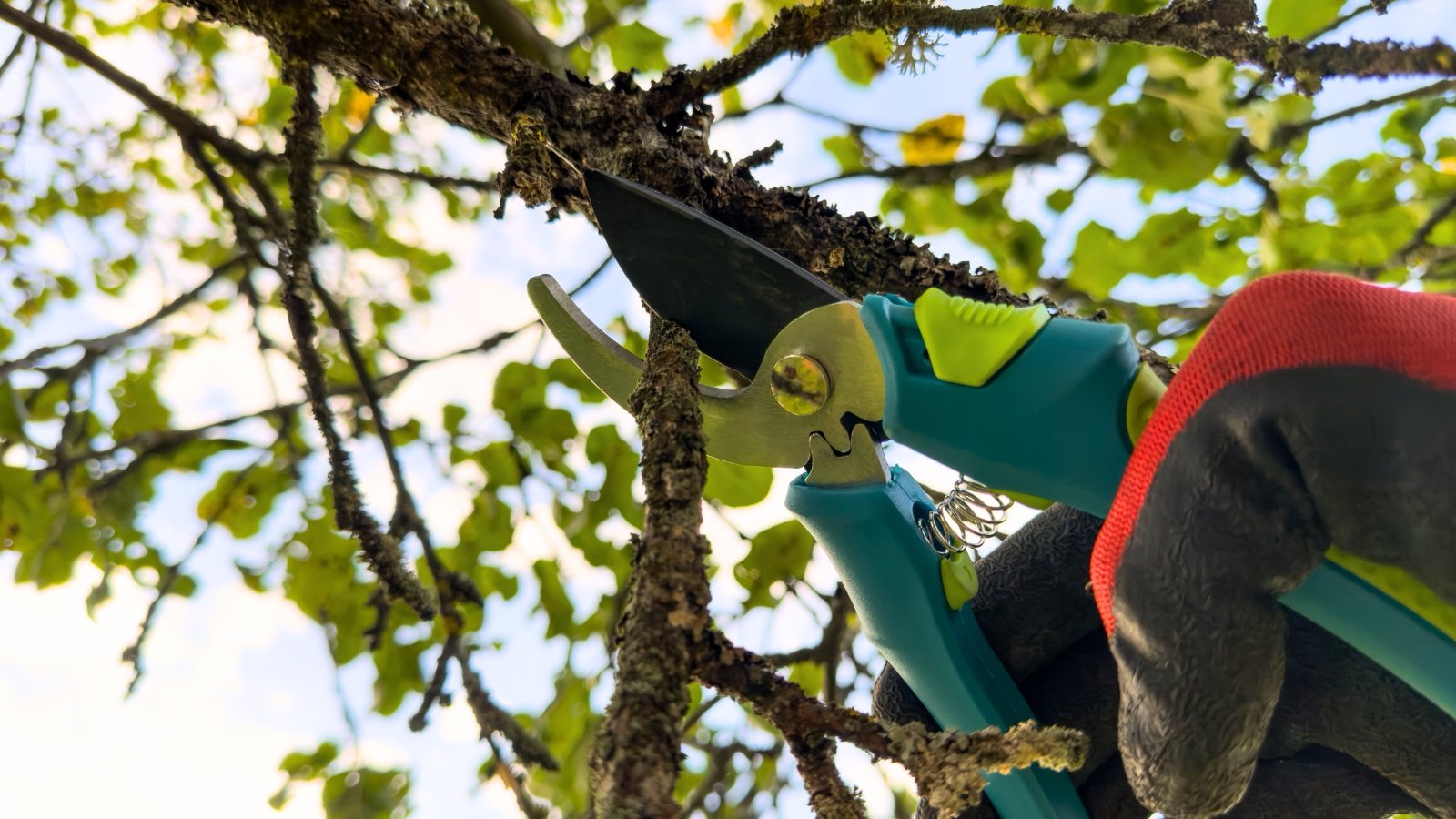 Snip away dead wood to keep trees happy.
Snip away dead wood to keep trees happy.The three D’s are important for fruit orchard cultivators. This term refers to diseased, damaged, and dead wood. Remove the three D’s promptly to prevent diseases from spreading.
Most fruit trees benefit from annual pruning in late winter and early spring. Remove the three D’s, then decide which branches to prune. Open up the canopy, reduce the height of the leaders, and increase airflow into the branches with smart pruning techniques.
Add Mulch
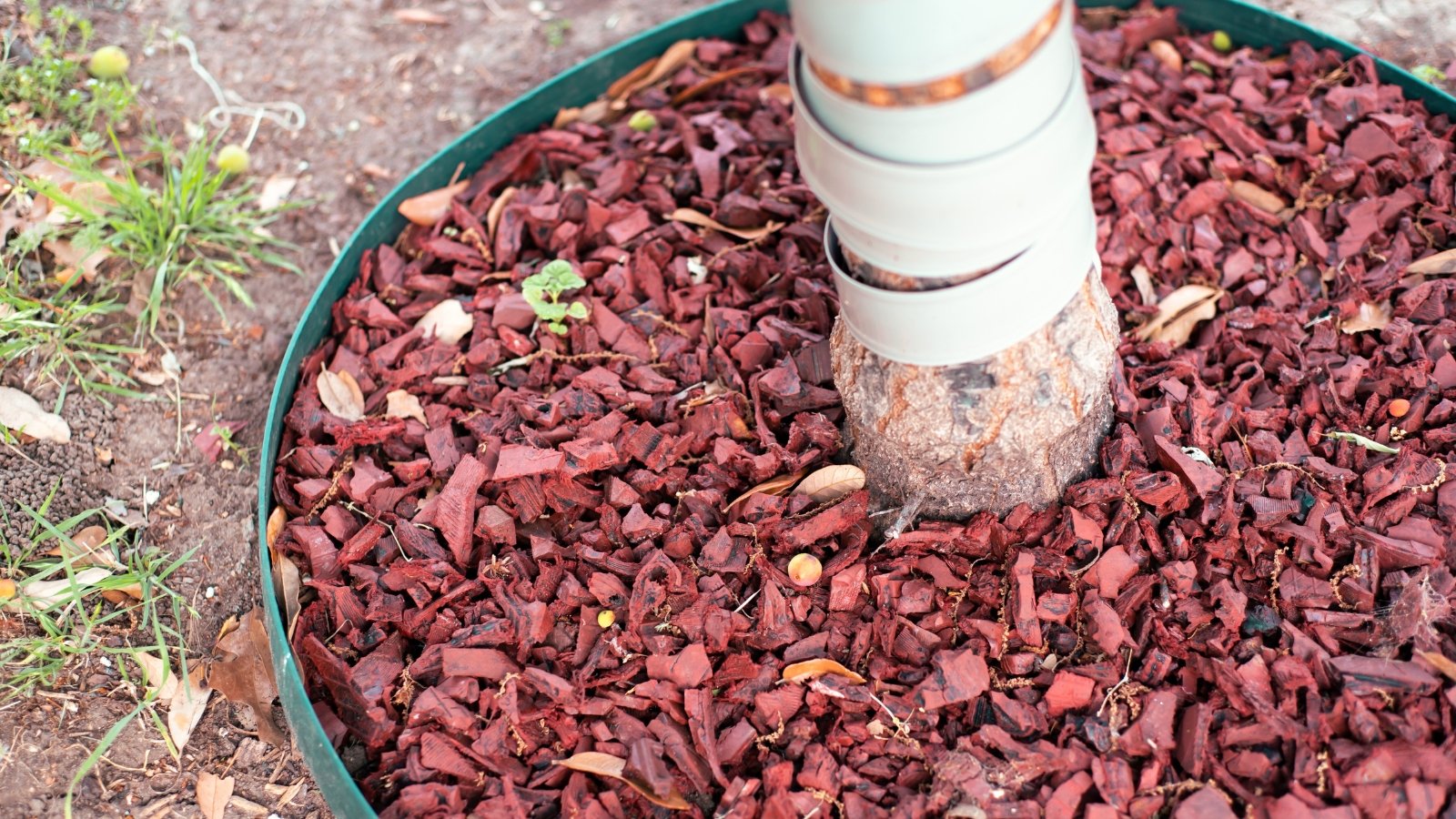 Wood chips and straw make great garden protectors.
Wood chips and straw make great garden protectors.Mulch is an important component of a healthy garden. Mulches like compost protect and feed the soil. They consist of organic matter that fosters worms and beneficial microorganisms.
The healthier your trees are, the more likely they’ll be able to resist pressures from fruit tree diseases. Compost is the best mulch, but many others work well, too. Try leaf mold, wood chips, or straw in your orchard.
When adding mulch, place a two to three-inch-thick layer of the stuff on top of the soil. Water it down, then keep it moist to help it break down into the ground.


 7 hours ago
1
7 hours ago
1



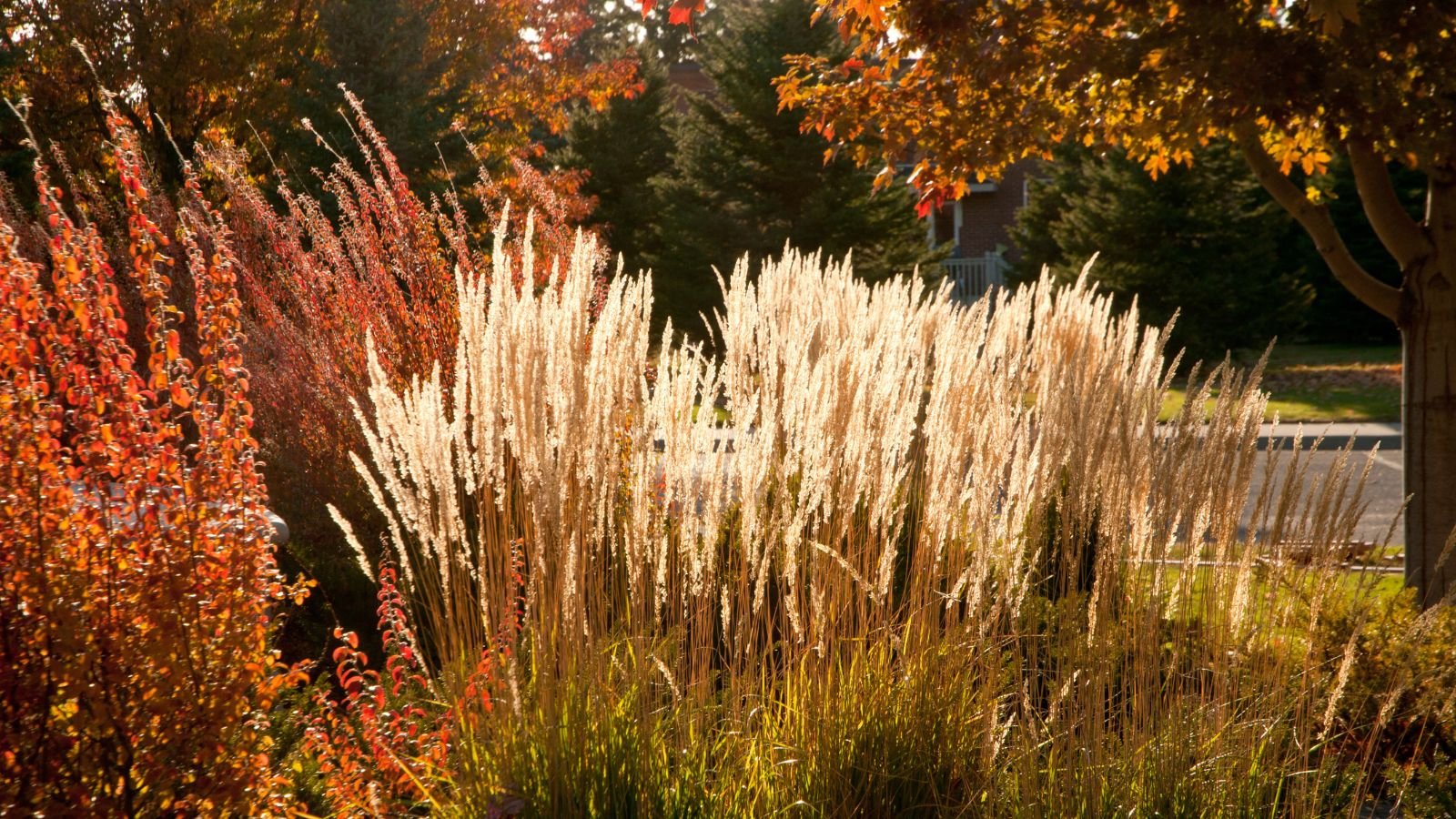

















 English (US) ·
English (US) ·  French (CA) ·
French (CA) ·